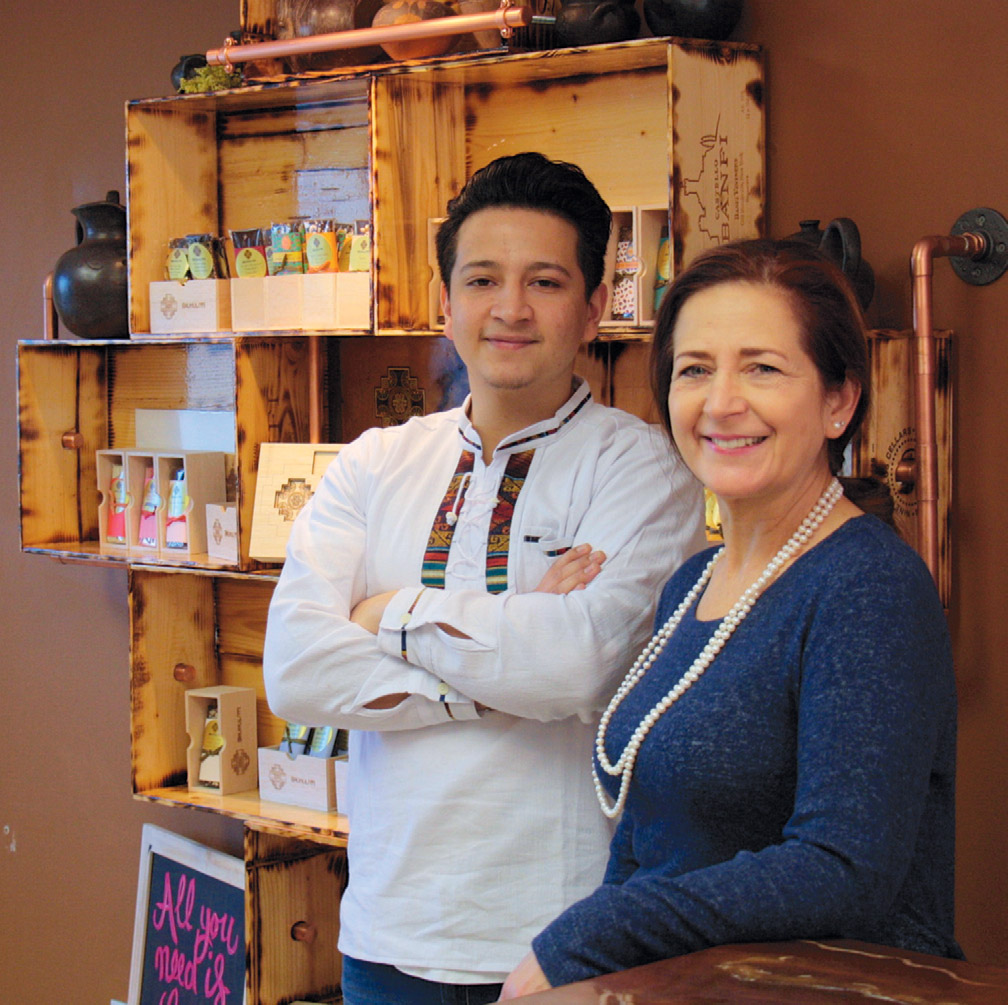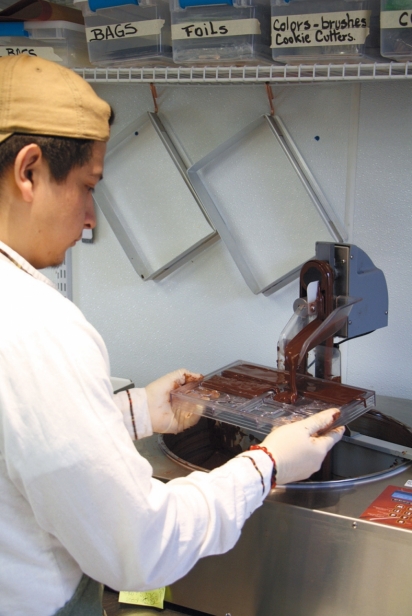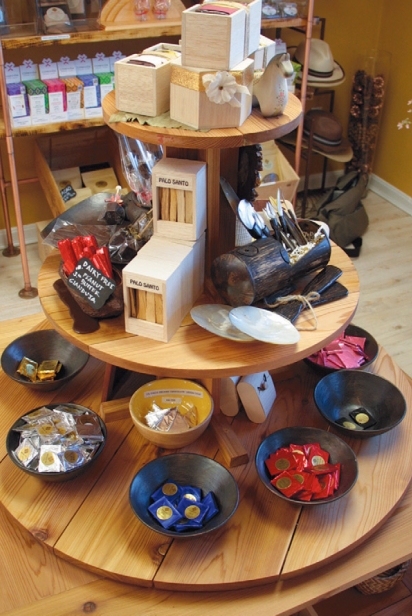Chukulati
Liana Strider was looking to make a career change when she returned to her native Ecuador several years ago. She was on a fact-finding mission, with the goal of starting her own coffee business back on Cape Cod. While in Ecuador, she made an important discovery: there was an unfulfilled need for high-quality chocolate back on the Cape. The need was her own, because she just couldn’t find chocolate like she had grown up with. Her Grandpa used to ferment, roast and grind his own chocolate from the much-coveted Arriba Nacional cacao beans.
In 2015, the business began to take shape as she teamed with her then 20-year-old son, Fernando Lopez. Together they set out to become chocolatiers and, in the fall of last year, the pair opened the doors of their very own shop, Chukulati, in Windmill Square on Route 28 in Marstons Mills. Their heritage is proudly on display everywhere you turn. Chukulati is the Quechuan word for chocolate. Quechua was the official language of the Incas and is still used today in Ecuador. The logo is an image of the Chakana or Inca Cross.
To say that not all chocolate is the same is an understatement. Sure, there are white, milk and dark chocolate varieties from which to choose. The underlying source ingredient, cacao, can be very different and result in a wide range of flavor. Chukulati sources their cacao from a single, organic source in the province of El Oro in Ecuador where Strider was born and raised. This cacao, Arriba Nacional, known for its fine aroma and flavor, is grown by a cooperative of farmers that ensures the highest quality cacao and makes it a true Ecuadorian gem recognized throughout the world. It also promises a true living wage for the farmers of the cooperative.
Cacao comes in three varieties: Forastero, Trinitario, and Criollo. It is Criollo, considered the finest cacao, making up less than five percent of the world’s chocolate, that Chukulati imports. It’s about as far as one can get from the cloned hybrid cacao beans, CCN-51, that mass producers like Hershey’s and Nestlé use. Criollo cacao is an heirloom fruit, which leaves it susceptible to disease and pest infestation, and it grows in the dappled shade from the canopy of larger rainforest trees. CCN-51 was created in the 1960s to increase the quantity of the yield, make it disease resistant and allow it to grow in full sun, greatly expanding the locations of cacao farms. It is also easier to grow, which is an enticement for the farmers. Unfortunately, the mass production drives down the prices, and therefore the wages of the farmers. In some areas within the equatorial belt around the globe, CCN-51 is quickly becoming a monocrop and bringing with it all the attendant pitfalls.
The farmers grow, ferment and roast the cacao beans, and Chukulati imports about 1100 pounds at a time to produce their line of chocolates. Strider, Lopez and their assistant, Rose Halley, temper the chocolate to create the final product. Tempering is a process of heating and cooling…and more heating and cooling. The chocolate’s cocoa butter is polymorphic and can form in a number of different crystallization patterns. Only one formation can give fine chocolate its familiar snap when broken, crumbly crunch when bitten, and slow melt on the tongue. The tempering process can take up to four hours, and the whole process through to the packaging takes about nine hours, according to Lopez.
The result is a line of chocolates that runs the spectrum of flavor. Lopez guides people through the different flavors and educates them as they go. There’s the white chocolate that has a 35% cacao measure, and the flavor profiles become more complex as you go up the chain of chocolates. The 70% cacao bar has vaguely woody undertones and at 80% the bars take on notes of red wine. At 100% cacao, the bars pack an intense richness that reminds me of a dark roasted coffee. Armed with the knowledge of the different flavor profiles, customers can make a newly educated decision as to which one they like best.
Strider and Lopez have turned their little shop into a feast for the senses: the aroma of hot chocolates being made to order, the displays filled with beautifully decorated bon-bons, ganaches, hot chocolate sticks with cubes of chocolate ready to be melted in a hot cup of milk, and the array of colorfully packaged chocolate bars with interesting flavor combinations like the one with coconut, cashew and sweet curry. The walls and shelves are adorned with Ecuadorian art that the pair brings back after each trip. “We like to support the local artisans,” Lopez proudly points out. They do want to continue and grow the use of locally sourced ingredients as their offerings expand. “Right now we use honey from Sagamore for our honey praline ganache,” he adds.
There is not only a passion but also a pride that shines through Strider and Lopez when talking about chocolate and Ecuador where they and their business all started. Lopez is more than happy to explain the fascinating history of chocolate as you nibble away.
“Chocolate is not candy. It is a food,” Strider stresses. “It’s a super food!” Indeed, studies continue to be published about all of the potential health benefits chocolate provides such as twice the amount of antioxidants as blueberries. Eating healthy and learning history has never been sweeter!
Chukulati
3821 Falmouth Road, Marstons Mills
774-361-6595 / chukulati.co








